How to make ventilation in a barn for animals: requirements and nuances of arranging ventilation
In autumn, winter, and most of spring, animals are constantly indoors.Their waste products emit a dangerous substance - ammonia. In addition, the concentration of carbon dioxide in the barn is significantly increased. Agree that constant ventilation is not a solution, especially in twenty-degree frost. But ventilation in an animal shed is no less important than heating.
Drafts do not have the best effect on the health and offspring of animals. At the same time, you can’t do without air circulation. Therefore, in addition to insulating the building, it is also necessary to take care of the ventilation system. The latter must ensure normal microclimatic conditions, including air temperature, cleanliness and freshness.
In this article, we examined the basic rules of ventilation in animal sheds and provided standard values for temperature and humidity indicators for rooms in which animals are kept. We also described the procedure for arranging an effective air exchange system, providing instructions with visual photos and useful videos.
The content of the article:
- The importance of the microclimate in the barn
- Typical mistakes during construction
- Destructive consequences for the building
- Standards and principles of ventilation design
- Automation of ventilation systems in a barn
- Recommendations for choosing the type of ventilation
- Conclusions and useful video on the topic
The importance of the microclimate in the barn
Often, owners do not bother creating optimal conditions in the barn. In the best case, holes are made in the wall in the room.
But the importance of oxygen indoors cannot be underestimated, because animals must live in an insulated and well-ventilated barn. During the construction of which it is advisable to use sawdust, hay or straw.Materials of natural origin perfectly absorb and retain moisture.
Maintaining proper air exchange reduces the incidence of disease in animals, and improves weight gain and the number of offspring.
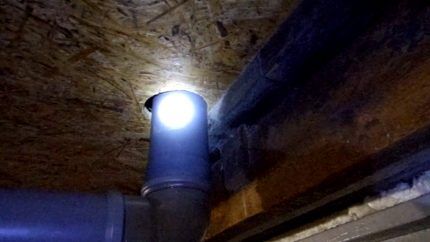
In the warm season, you can prevent the appearance of a musty smell in the room and the spread of mold through ventilation.
In winter, it is not advisable to open doors and windows. After all, the temperature should be maintained within +18-+22 degrees Celsius. Deviation of indicators from the norm increases the risk of colds.
Typical mistakes during construction
The barn can be a free-standing building or attached to the house. As a rule, premises are built on the principle of “how to save money.” They often erect it independently and quickly.
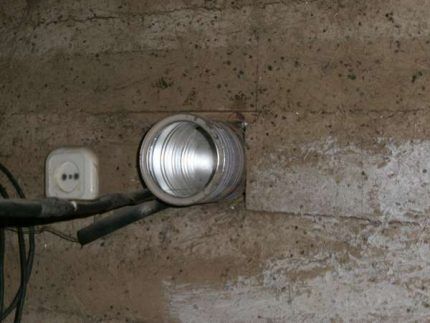
There are several main problems with such an object:
- Cheap foundation. Blocks and tires with concrete are used as the basis of the room. In the best case, they make a strip foundation. There is practically no waterproofing and insulation of this part of the building. And this causes free transfer of cold and moisture from the soil into the room.
- The floor often remains earthen. If you don't raise it a little higher, the air inside will be cold in winter.
- There is also no external waterproofing or wall insulation. Or they do it in the simplest way and make big mistakes. As a result, significant costs will be required for heating, and the building cools down very quickly.
- Insufficient natural light or its complete absence. One small window is made in the barn. And the importance of sunlight is difficult to overestimate, because ultraviolet radiation repels mold.
The presence in the building of all the listed defects or some of them leads to an increase in the level of humidity, disruption of air exchange, which is manifested by the complete absence or lack of fresh air, severe cold.
Destructive consequences for the building
The listed violations will directly affect the utility unit:
- High humidity and regular temperature changes, especially if the structure is built from wooden materials, will accelerate the destruction of the barn. The finishing will also suffer, of course, if it was done. Unfavorable climatic conditions lead to damage and shedding of building materials. It will be necessary to carry out restoration work.
- The spread of mold also leads to the destruction of the room. Disputes can spread to other premises, including a residential building.
Insufficient air exchange causes the accumulation of gases from manure. And this is fraught with the creation of an unpleasant odor, which is extremely dangerous for human health.
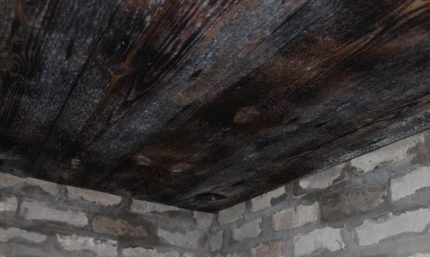
If part of the shed is used as storage space, the property can quickly deteriorate.
This especially applies to wooden products, in particular firewood and furniture, and metal objects that are prone to rust. Fabric will also be damaged, for example, old clothes, which are often stored in sheds.
Standards and principles of ventilation design
In a non-residential area where things will be kept, the ventilation system should be a multiple of 1. This means that within 60 minutes the air in the barn should completely change. Ventilation according to this technology must have a performance that exceeds the volume by 15-30 points. If items that become unusable due to high humidity levels are stored inside, the circulation rate should be increased by one and a half or two times. We discussed warehouse ventilation standards in more detail in this material.
In the case of small private farms, when various animals are kept indoors - from bulls to sheep, the air exchange rate should be 4. This indicator can also be used by owners of mini-farms, where there are only two or three cows or ten rabbits.
But for a large number of livestock, creating optimal conditions involves not only focusing on air exchange rate. In this case, it is important temperature And humidity. The optimal humidity level is about 80. The coefficient can be determined using a psychrometer.
The level of indicators will differ for different animals - for example, the standard temperature for keeping cattle is 8-10 degrees with a humidity level of 70%. More details about barn ventilation can be read in our other article.

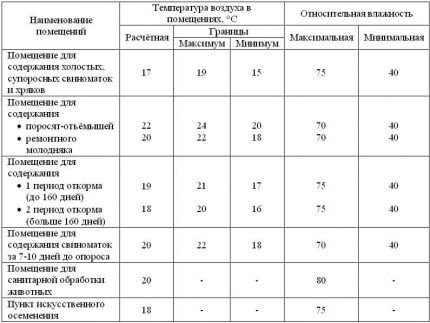
The data presented are used in large livestock farms with modern ventilation and heating systems. In an ordinary shed on a summer cottage, creating similar conditions will be much more expensive and difficult.
Arrangement of natural air exchange
This option can be called the simplest and cheapest, but also the least effective. After all, natural ventilation largely depends on the location of the building, as well as weather conditions.
You can arrange it as follows:
- Air flow is provided through a gap under the door or window. The ventilation system may also include supply valveplaced at the bottom of a wall or grille in a door.
- As a hood, it is advisable to use a pipe leading outside through the roof or wall under the ceiling. The external opening should be located above the ridge of the roof. To improve traction on top of the hole, you should install deflector.
But the natural ventilation scheme is not suitable for all rooms. In some cases, it will only make problems worse.
It is undesirable to choose this method of air exchange in the following cases:
- If the shed area is more than 30 square meters.
- Around the building there are taller buildings or branchy trees growing. Exhaust ventilation will not work well if the area where the utility yard is located is in a lowland.
- There is no foundation or it is not waterproofed or insulated.
- There is a high level of humidity indoors. With natural ventilation, humidity will increase even more during precipitation.
- Moisture condenses on the ceiling and walls of the building, which means that the problem can only be solved with the help of external insulation of the building.
It is also undesirable to use only this type of ventilation if animals will live in the room all year round or objects that are susceptible to mold will be stored.
Forced ventilation scheme
The mechanical system ensures forced air circulation regardless of weather conditions.
In sheds with a small area, you can arrange ventilation yourself: mount a fan on the hood, and leave the inflow natural.
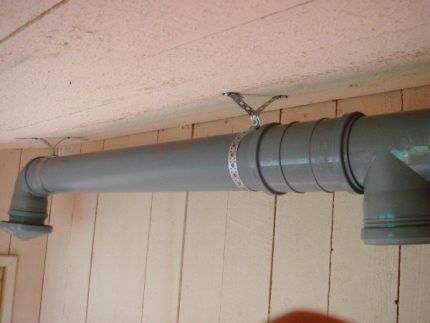
In a barn for animals, making ventilation yourself is not so difficult:
- The inflow is provided through a window or a gap under the door. You can install a supply valve at the bottom of the wall or install a grille in the door.
- To remove air, a pipe is used, which is preferably installed through a wall under the ceiling or roof. A duct fan should be placed in the interior. The element should be covered with a protective cap on top.
The easiest way to independently install an exhaust pipe is to carry out the pipe through the wall under the ceiling. In this case, there will be no need to seal the hole through the roof.A forced exhaust hood should be installed in a small shed opposite the inflow, that is, on the opposite wall.
In fact, the only difference compared to a natural system is the installation of a fan in the exhaust pipe. For a small shed, a device with low power is sufficient; the price of such a unit will be about 5 thousand rubles. Even with continuous operation, electricity costs will be only a couple of hundred rubles per month.
Automation of ventilation systems in a barn
It is advisable to improve the ventilation system if there are always animals in the room or valuable property is stored.
There are several options for how to properly ventilate a barn:
- using a humidity sensor;
- using a temperature sensor.
If you configure the exhaust fan to start using a humidity sensor, then the device will turn off when the psychrometer reading is normal. And increase the speed if, at an acceptable level of air humidity, the fan operates at minimum speed.
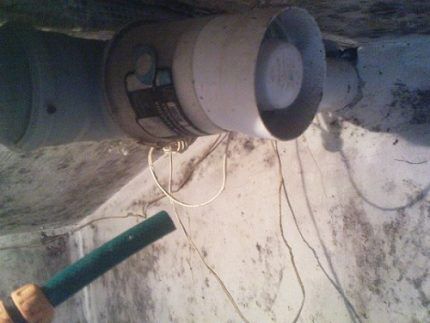
You can start or stop the fan, or change its speed using the temperature sensor. Especially if the building will be used to keep animals. In the summer, the fan will turn on or increase speed during the heat.
In winter, on the contrary, when the temperature in the room drops, the fan will stop working altogether or slow down.
There are several ways to maintain the temperature at the proper level:
- Ventilation units are combined with heaters - steam, water and electric.
- The heating and ventilation device is installed in a special chamber or under the guise of a monoblock directly in the room.
- You can also save thermal energy using heat recovery units built into the ventilation system.
- By installing supply and exhaust ventilation with recovery and heat recirculation.
After installing ventilation, it is important to test it before use.

Recommendations for choosing the type of ventilation
Each type of air exchange has its own advantages and disadvantages; several factors should be taken into account before installation:
- The amount of fresh air entering the room - in the warm season, the flow increases.
- The influence of natural conditions on the ventilation system, including average annual temperature and wind direction.
- The location of the barn is in a lowland or on a hill.
- Dimensions of utility room.
- Number of livestock.
And only after finding out the climatic conditions and how the air circulates inside the building can you begin to install one of the types of ventilation systems.
In addition to animals, do you also have poultry on your farm? In this case, we recommend that you read our other article about the device ventilation in the chicken coop.
Conclusions and useful video on the topic
Useful information on how to deal with high humidity in a shed:
More details about the principles of natural ventilation in the plot:
Without a ventilation system, maintaining the proper level of humidity, air temperature, and freshness in the room is problematic. To ensure proper air exchange in the animal shed, it is necessary to install a ventilation system, taking into account the regulatory requirements for the room.
If you have encountered any difficulties in creating optimal microclimatic conditions, please share your story. You can leave a comment in the block below the text. Here, ask your questions regarding the proper arrangement of ventilation in the barn or utility rooms.



